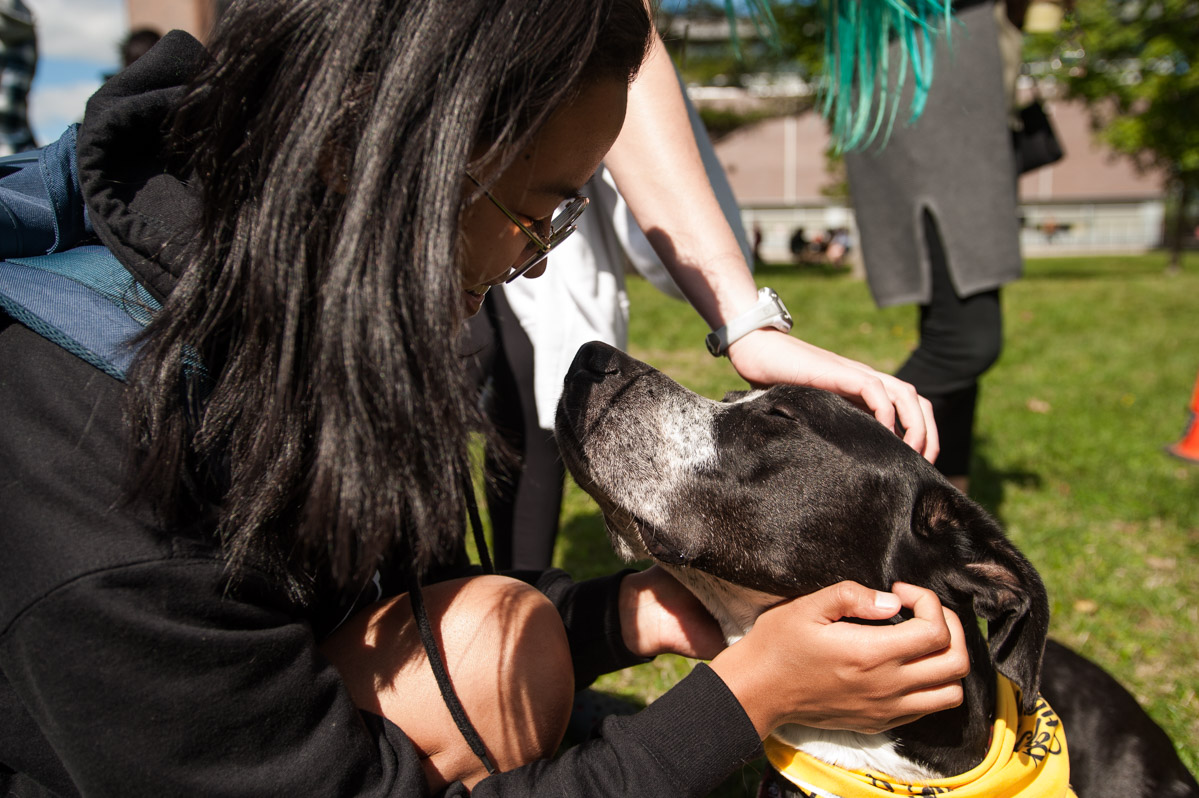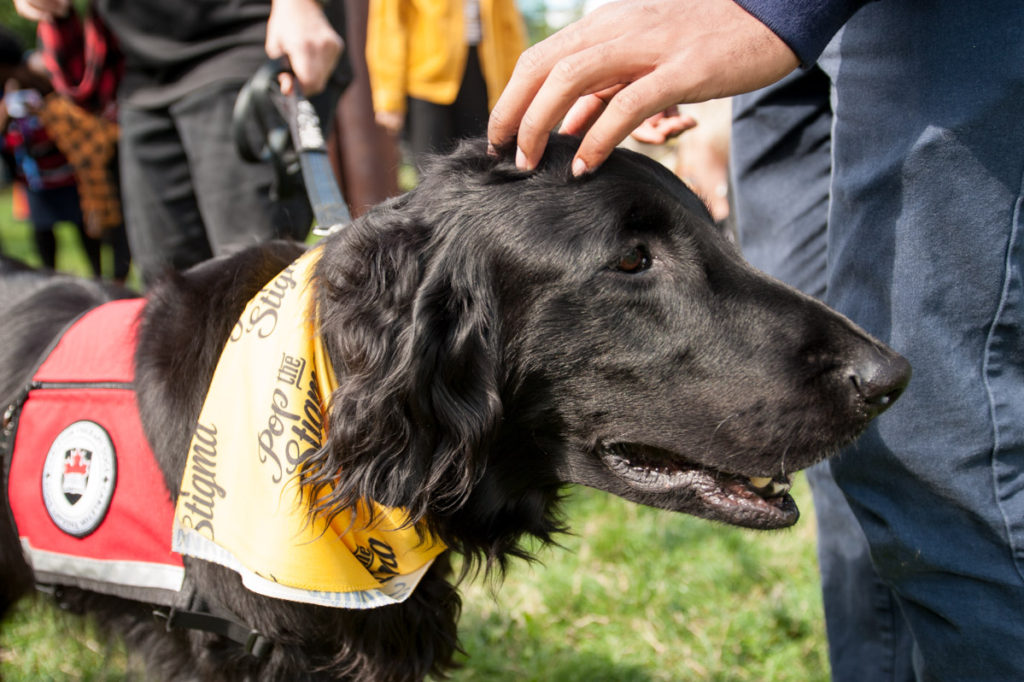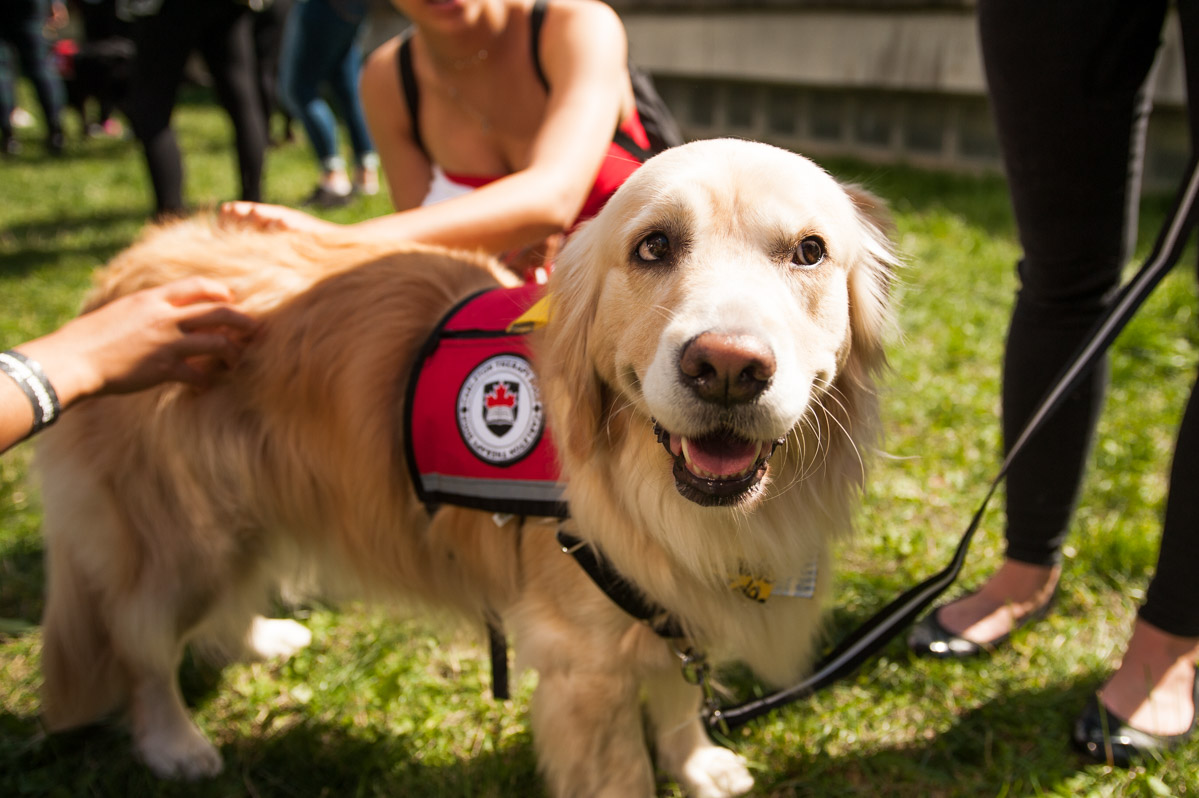When young people go off to university they often have to leave their beloved pets behind. That also means leaving behind what may be a calming and therapeutic presence.
According to Ontario’s Universities, the number of students on post-secondary campuses who face mental health struggles has more than doubled over the past five years.
On some campuses, mental health services have turned towards animal assisted therapy as part of a solution.
Beginnings at Carleton
Therapy dogs are a form of animal assisted intervention (AAI). This refers to “any intervention or activity that includes or incorporates an animal to promote improvements to physical, social, emotional or cognitive functioning of an individual,” according to Dr. Colleen Anne Dell, a professor of sociology and an organizer of the animal assisted therapy program at the University of Saskatchewan.
As students’ mental health concerns increase, university campuses such as Ryerson University, University of Saskatchewan, and the University of Ottawa, among many others are providing therapy dog programs to students to relieve stress. Carleton is no exception.
The university’s therapy dog program expanded this year to feature 13 dogs working on campus. But it all started with one dog and one handler. Carleton’s healthy workplace coordinator, Shannon Noonan started this program by working in the Residence Wellness Space with her dog Blue, who is still a therapy dog at Carleton today.
“I was doing pet therapy for the students in residence in the counselling office,” Noonan said. “When that caught on, someone approached me from the Centre For Initiatives in Education and they asked me if I would do a pilot project with the ESP (Enriched Support Program) and the Indigenous Enriched Support Program.”
Riding on the success of the program with the ESP, along with research which showed the validity of using the dogs to reduce students’ stress, Noonan approached the office of the vice president of students and enrollment to expand the program.
“The idea was always to prove validity and ask for expansion,” she said. “The VP (student) and enrollment agreed to allow us to a pilot year again to expand the team to seven dogs.”
Animals Helping Humans

“Our purpose is to enlighten the lives of people who are sick, lonely, institutionalized or in need of support,” Lisa Paul, director of operations for the Ottawa region for SJA said in an email.
“The dogs just kind of smile at you, and you just physically feel like stress kind of flows off of you and there’s this light inside of you when you see them,” Brooke Welsh, first-year journalism student
Julianne Labreche, a founding member and volunteer at Ottawa Therapy Dogs (OTD), said that therapy animals are meant to help those who are vulnerable and isolated.
Spending time with animals, according to Dr. Dell, can decrease the levels of our primary stress hormone, cortisol, and increase feelings of love, comfort, support and acceptance. It can also reduce loneliness, anxiety and depression.
Students said they notice a positive impact on themselves when interacting with the dogs.
“The dogs just kind of smile at you, and you just physically feel like stress kind of flows off of you and there’s this light inside of you when you see them,” said Brooke Welsh, a first-year journalism student at Carleton.
“Immediately after [seeing the dogs] I’ll have a better day. I feel refreshed a little bit or I feel like there’s something so much bigger than what could be bothering me that day.”
Creating Community
Noonan pointed out that the bond students have with the dogs can be special at Carleton because since the same dogs are here every week, students get a chance to create lasting and meaningful connections.
“It also really creates a community for us, a Carleton community that is specific to us,” said Janne Cleveland, an English professor at Carleton and a dog handler for Monty, a miniature pinscher mix.
“Every week when we come in more and more people come. It depends on everybody’s schedule, but we have regulars, for example, students who know which day he’s going to be there and it works out that they have finished a class when they come and see him right after class,” she said.
At Carleton, all of the therapy dogs and their handlers are certified by OTD. Noonan said that dogs are selected based off of their temperament, trainability and talent. These dogs have to be “good dogs” who are connected to, and will respond well to their owner or handler and clearly like to be around people.
Labreche said that OTD looks for dogs who genuinely love people and will be able to “work magic” with everyone they come into contact with.
Challenges

According to Noonan, while some dogs may be very well trained, and have a good temperament, this is not always the case. Plus, some may not have the knack for being petted and around people all day.
According to Dell, one of the biggest criticisms of therapy dogs has to do with their handlers, who are generally not trained counsellors. This makes it difficult to know conclusively whether the positive feelings students experience come solely from petting the dog.
“It is challenging to separate the therapy dog handler conclusively from the situation and account solely for the benefits coming from the dog,” she said. “The handlers are not mute during the interactions and they stay with the dogs–they are part of the social interaction.”
However, Cleveland sees these interactions as positive.
“If someone is feeling better, I’m not necessarily going to say, ‘Well, I must know why.’ Feeling better is just feeling better. If we’ve created a community, and that helps a person to feel better, that’s great,” she said.
“I would never suggest that the dog therapy program is something that can replace having a counselor or having a therapist, somebody to talk to specifically or any of that. It’s just another tool. It’s another resource to add to the resources that are already here.”
Despite its criticisms, animal assisted therapy continues to gain popularity. One theory suggested by Dr. Dell and Labreche is the “biophilia hypothesis” which refers to an innate need people have to maintain a connection with nature and the wild.
Therapy dogs are also being used across a variety of vulnerable populations such as retirement homes, hospitals, and homeless shelters, according to Labreche.
Going forward, Noonan explained that the Carleton therapy dog program has the potential to expand more, but their primary focus right now is ending the stigmas around mental health, encouraging students to seek help and utilize campus resources, and to curate a successful online presence.
Cleveland said people should go and see the dogs if they’re having a stressful day.
“They’re not the answer to everything. They’re not going to solve every problem. The problems you walk in with on the day, you come to Monty, you’re still going to take them with you when you walk out the door,” she said.
“But your attitude about dealing with them and your attitude about your ability to take on what you have to do in the course of a day can be altogether different. Sometimes it’s all we need.”
The therapy dog schedule can be accessed at https://carleton.ca/wellness/dogs/schedule/.
Feature image from file. With files from Marieta-rita Osezua.






